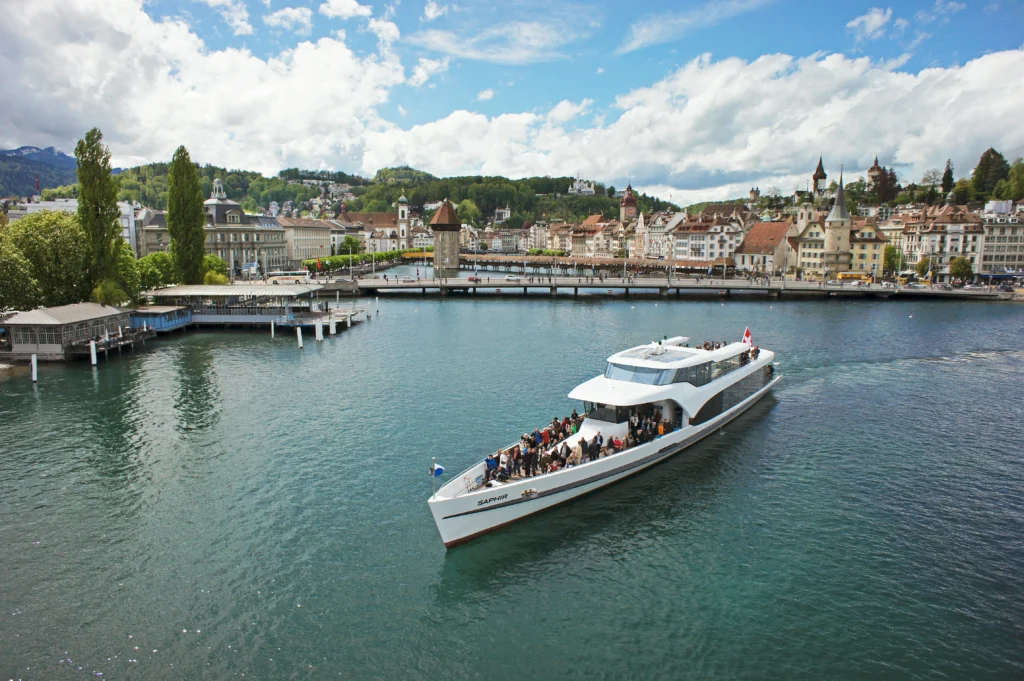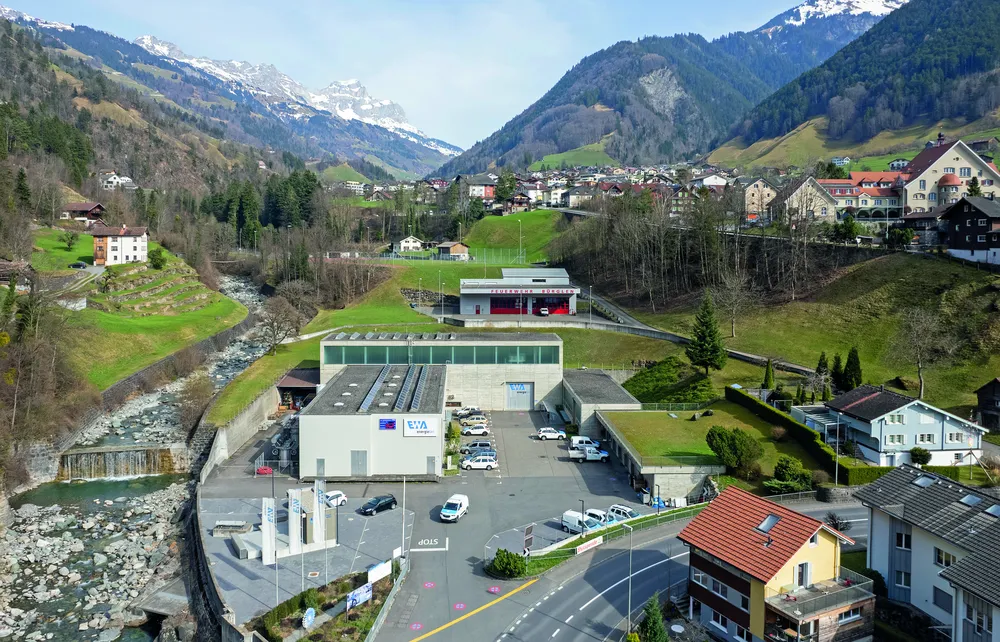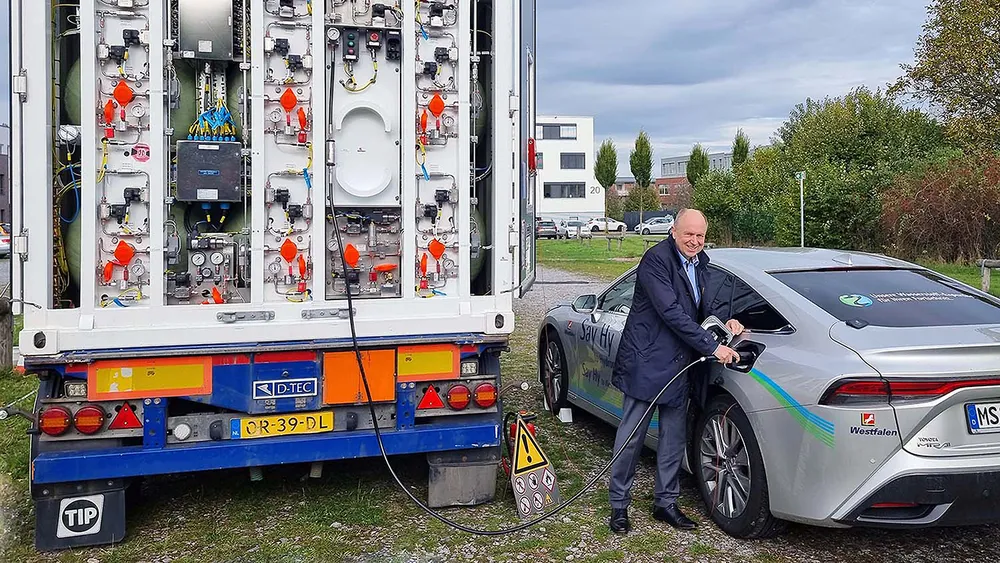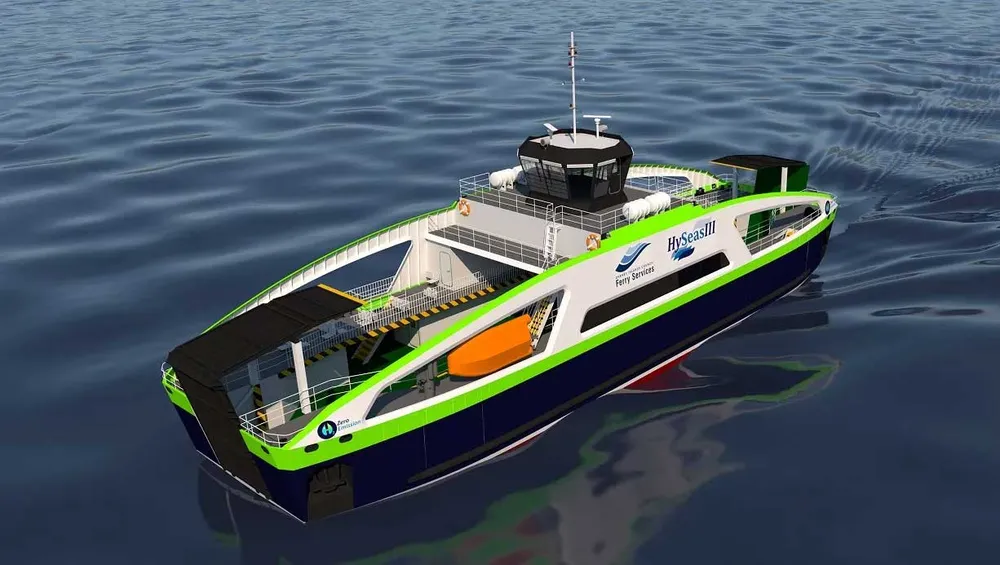Hydrogen as an emission-free, alternative fuel is to find its way into passenger shipping on Swiss lakes. The Lake Lucerne Navigation Company (SGV) is planning to convert its motor vessel Saphir, thereby taking a significant step towards sustainable shipping.
Hydrogen technology appears to be a promising solution for reducing
CO2 emissions to net zero by 2050. In fuel cells, hydrogen
(H2) is converted into electricity, water and heat in an electrochemical reaction. The electrical energy generated in this way, coupled with a battery, drives a motor. The only waste product of this process is water. Absolutely no pollutants such as nitrogen oxides and particulate matter, including CO2, are emitted. In addition, other boaters and residents are exposed to less noise and vibrations.
However, the use of hydrogen is not without its problems. The infrastructure is currently still limited and production is energy-intensive. In addition, due to its low density, H2 must be compressed or liquefied to a high pressure of 350 bar and stored at very low temperatures of around -253°C. An additional safety risk is its high flammability.
Shipbuilders in particular are therefore faced with major challenges. The innovative Shiptec AG in Lucerne, which is committed to environmentally friendly technologies, has carried out extensive research into the use of H2 in Swiss inland shipping. Although hydrogen propulsion with fuel cells, battery buffering and an electric motor is not yet commercially competitive, a project study has shown that a medium-sized passenger ship can be operated economically and ecologically in the future.
.

The SGV as a pioneer
Ecological considerations convinced SGV to test the potential of hydrogen as an alternative fuel on a passenger ship. Not with a new build, however, but with the conversion of the MS Saphir. The ship, which can accommodate 300 passengers, was built in 2012 in the design of a luxury yacht and is mainly used for round trips in the Lucerne lake basin. Its modern interior offers different seating areas, a stern platform at water level and a bar on the upper deck. As the existing hybrid drive system with diesel units and electric motors would have been due for renewal in the next few years anyway, it was an obvious choice to convert to hydrogen.
Hydrogen hybrid system
The Shiptec engineers did not want to completely dispense with batteries as an energy storage system. Significantly more electricity is needed to produce H2 than can be recovered later in the fuel cell. Therefore, as much electrical energy as possible should be stored directly in batteries on the ship. The fuel cell system will also be used as a range extender.
The conversion of the MS Saphir is scheduled to start in the fall of 2025 at the Shiptec shipyard in Lucerne. The costs, including the initial costs for a filling station, are estimated at around CHF 4.4 million.
A large part of the costs are due to the enormous safety requirements for handling hydrogen. A safety distance of at least 80 centimeters must be maintained on all sides from the outer shell of the ship. Furthermore, rooms with fuel cells and rooms for storing hydrogen must be airtightly separated from other rooms on the ship. This not only requires the construction of additional bulkheads, but a new steel ceiling must also be welded in. The hydrogen system and the new ventilation system and fire protection concept it requires also necessitate a whole range of new installations on board.
H2 from local production
Hydrogen is produced by electrolysis. To produce green hydrogen, water is broken down into oxygen (O2) and H2 using electricity, preferably with renewable energy. To ensure the hydrogen required for the MS Saphir, SGV Holding AG, as the parent company of SGV AG and Shiptec AG, is participating in the first H2 production plant in Central Switzerland. The H2Uri AG plant is being built at the Bürglen power station in the canton of Uri. The hydropower comes from the Schächenbach, which supplies running energy around the clock. The plant will therefore be located directly next to the power source and will mainly be in operation when surplus electricity is available and the electricity price is as low as possible. Annual production is to be expanded to 260 tons of green hydrogen.

BÜRGLEN IN URI IS BEING BUILT
THE FIRST H2
-PRODUCTION PLANT
IN CENTRAL SWITZERLAND. ©RR

-SHIPS OF THE SGV ARE TO BE SUPPLIED WITH A MOBILE HYDROGEN FILLING STATION. ©RR

HYSEAS III WILL ONE DAY BE USED AS A FERRY IN SCOTLAND. ©RR
Commissioning in summer 2026
The renovation of the MS Saphir is expected to take a good six months. SVG Managing Director Stefan Schulthess expects it to be able to resume operations in summer 2026 at the earliest. “Together with the ship on Lake Walen, it will then be the first hydrogen-powered passenger ship in Switzerland.” However, battery-powered solutions are currently ahead in inland navigation. SGV is also testing this variant with the MS Rütli. A third option is the use of so-called synthetic fuels, for example for steamships. Here, the use of solar fuel produced by the company Synhelion is planned. Synhelion is an ambitious Swiss company that wants to drive forward the energy transition with a groundbreaking innovation: the conversion of solar energy into CO2-neutral fuels. This vision, which first sparked at ETH Zurich, could revolutionize mobility worldwide. “The reduction of emissions in shipping must be achieved step by step,” explains Schulthess. “It must go hand in hand with the development of new propulsion technologies and an increase in the production of renewable energies.”
By operating the MS Saphir completely emission-free, the SGV is hoping not least for an image boost, especially on a lake in a largely intact natural landscape, as is the case with Lake Lucerne. The extent to which this can be monetized remains to be seen.

